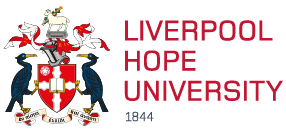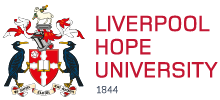The Exercise Physiology and Nutrition Research Group investigates the mechanisms that underpin human exercise performance, metabolism, and the interactions between physical activity and nutrition. Combining mechanistic, applied, and behavioural approaches, the group conducts experimental and clinical studies to enhance athletic performance, support metabolic and cardiovascular health, and promote well-being across diverse populations.
Through collaborations with healthcare, academic, and industry partners, the group translates findings into evidence-based strategies that inform practice and improve outcomes in both sporting and clinical settings.
Research Group Members
Prof. Simon Marwood
Dr Denise Roche
Dr Pete Angell
Dr James Shelley
Dr Richard Webb
Dr Margaret Charnley
Dr Matina Hakim
Dr Shuchang Lui
Dr Aoibheann Mullan
Dr Matt Jackson
Dr Marc Wells
- Cardiac and metabolic consequences of anabolic androgenic steroid use.
Collaborators: Liverpool John Moores University
- Influence of MCT supplementation on cognitive performance.
- Cardiovascular disease risk in adults with Cystic Fibrosis.
Collaborators: Liverpool Heart & Chest Hospital
- The female athlete: neuromuscular function and performance across the menstrual cycle and the implications of low energy availability for cardiovascular risk.
Collaborators: Liverpool John Moores University, Oxford Brookes University, United Emirates University, University of Oxford
- Molecular determinants of metabolically healthy obese subjects.
Collaborators: Liverpool John Moores University, Qatar University, University of Oxford
- New frontiers in lipoprotein analysis: small Molecules, big questions?
Collaborators: Liverpool John Moores University, London City University
- Mechanisms and assessment of human aerobic performance.
Collaborators: Vrije Universiteit
- Advancing NIRS applications to understand and measure aerobic function.
- Combining mechanical and physiological models to optimise human performance.
Dairy Consumption and Risk of Cardiovascular and Bone Health Outcomes in Adults: An Umbrella Review and Updated Meta-Analyses
Sharifan, P., Roustaee, R., Shafiee, M., Longworth, Z.L., Keshavarz, P., Davies, I.G., Webb, R.J., Mazidi, M., Vatanparast, H. (2025). Nutrients, 17(17), 2723.
Effects of Single Low-Carbohydrate, High-Fat Meal Consumption on Postprandial Lipemia and Markers of Endothelial Dysfunction: A Systematic Review of Current Evidence
Wilson, M.L., Lane, K.E., Fadel, A., Dawson, E.A., Moore, E., Mazidi, M., Webb, R.J., Davies, I.G. (2024). Nutrition Reviews, 83(12), e1049–e1067.
The Cardiovascular Disease Risk Indicators Linked With Low Energy Availability in Physically Active Females: A Systematic Review
Pope, L., Roche, D.M., Marshall, Z.A., Alwan, N., Webb, R.J. (2025). Women in Sport and Physical Activity Journal.
Utility of the Respiratory Compensation Point for Estimating Critical Power: Insights From Normoxia and Hypoxia
Marwood, S., Lane, K.E., Mazidi, M., Webb, R.J., Davies, I.G. (2025). European Journal of Sport Science.
Hericium erinaceus: A Possible Future Therapeutic Treatment for the Prevention and Delayed Progression of Alzheimer's Disease – A Systematic Review
Cornford, N., Mazidi, M., Webb, R.J., Davies, I.G. (2024). British Journal of Nutrition.
Low Iodine Nutrition Knowledge in Chinese Breastfeeding Women Despite Adequate Iodine Status
Liu, S., Zhang, L., Wang, X., Zhang, Y., Webb, R.J., Davies, I.G. (2024). Nutrients, 16(4), 491.
PAK1-Dependent Mechanotransduction Enables Myofibroblast Nuclear Adaptation and Chromatin Organization During Fibrosis
Jokl, E., Mullan, A.F., Simpson, K., Webb, R.J., Davies, I.G. (2023). Cell Reports, 42(11), 113414.
Prevalence, Risk Factors and Outcomes of Cardiac Disease in Cystic Fibrosis: A Multinational Retrospective Cohort Study
Frost, F., Nazareth, D., Fauchier, L., Wat, D., Webb, R.J., Davies, I.G. (2023). European Respiratory Journal, 62(4), 2300174
Effect of Ischemic Preconditioning (IPC) on Recovery of Exercise Performance Following a Bout of Exercise to Volitional Exhaustion
Angell, P. and Marwood, S. (2023). Physiologia, 3(3), 394-405.



